Head-To-Head: Apple MacBook Vs. Dell XPS 13
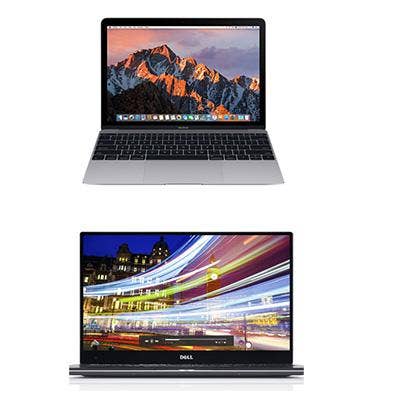
Portable And Pretty
Whatever your feelings on Apple's products, most would agree the devices excel on design. The MacBook might be the ultimate example of this in the laptop sphere. But Dell has offered its own take on a sleek -- even MacBook-like -- design with the XPS 13. Both laptops rate high on portability in addition to having a premium look. Which is a better fit for you? In the following slides, we compare the Apple MacBook versus. the Dell XPS 13 on specs and price.
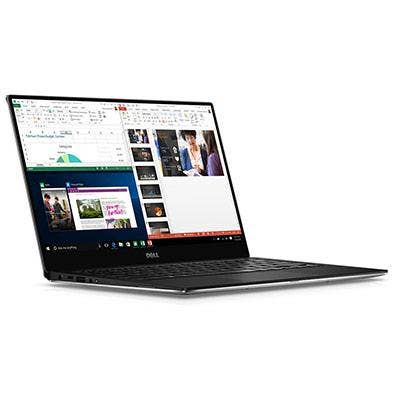
Display And Size
Dell's XPS 13 has the larger display of the two laptops in our comparison, at 13.3 inches. However, the minimal bezel around the display helps ensure that the laptop feels relatively small overall. That makes it closer in overall size to the MacBook, which features a 12-inch display. The MacBook overall measures 11 x 7.7 inches, while the XPS 13 measures 12 x 7.8 inches.
Dell offers two display options for the XPS 13, with 1,920 x 1,080 as the standard. There's also a QHD+ (3,200 x 1,800) touch-screen configuration available for the XPS 13. Apple offers only one display choice for the MacBook, a Retina display with resolution that falls between the two options for the XPS 13 -- 2,304 x 1,440.
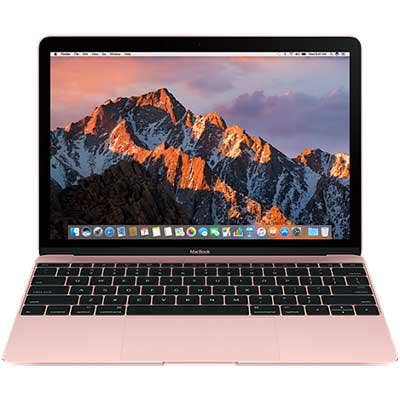
Thickness And Weight
As mentioned, portability is a main selling point for both laptops in our comparison. The MacBook, however, is the clear winner in that respect. The MacBook measures 0.52 of an inch thick and weighs just 2.03 pounds. By comparison, the XPS 13 measures 0.6 of an inch thick--and there's an even larger gulf in terms of heaviness. The non-touch model of the XPS 13 weighs 2.7 pounds, and the touch-screen model has a weight of 2.9 pounds.
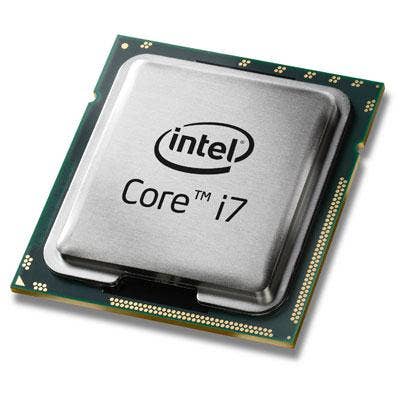
Processor
There are always trade-offs in laptop design, and so while the MacBook is significantly more portable than the XPS 13, the MacBook does give up some processing power in return. While both the MacBook and XPS 13 now offer processors from Intel's latest generation—thanks to an update to the Mac lineup in June--the MacBook opts for low-power processors (from Intel’s "Y series," which don't require a fan). That means less horsepower; options are for Core m3 (clock speed of 1.2GHz), Core i5 (1.3GHz) or Core i7 (1.4GHz).
By contrast, the XPS 13 uses Intel's faster "U series" processors from the seventh generation—Core i3/i5/i7, with a base clock speed of 2.4GHz. In short, the XPS 13 is going to be noticeably speedier for most tasks.
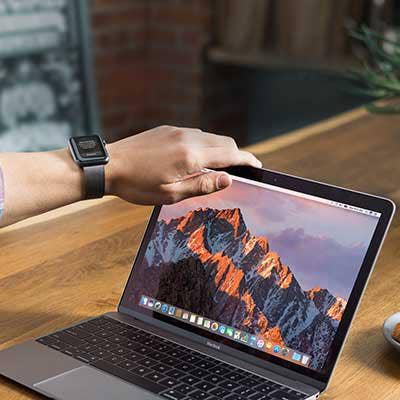
Battery Life
The MacBook does gain some energy efficiency benefits from Apple's decision to use low-power processors. But again, the emphasis is on saving space to make the MacBook thinner and lighter—rather than enabling long battery life. Apple promises up to 10 hours of battery life on a charge for the MacBook, which has a 41.4WHr battery.
The XPS 13 features a much larger battery, 60WHr, and promises a good deal more battery life per charge --13 hours for the non-touch version (estimates aren't provided for the touch-screen version).
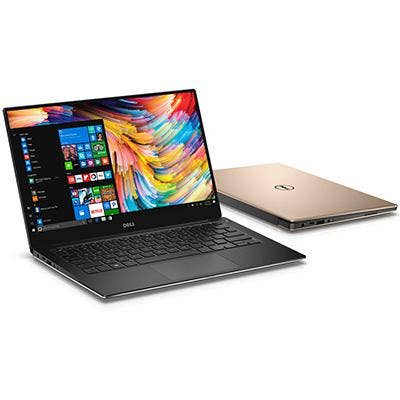
Ports
One of the biggest differences between the laptops in our comparison is on ports. Or in the case of the MacBook, port. The MacBook has just one port, USB-C, which must handle all connections, including power. An adapter will be necessary for any other types of connections, and the need to juggle between charging the laptop and any other external connections should be a consideration for potential buyers. The XPS 13, meanwhile, has a USB-C port and also comes with two USB-A ports and an SD card slot.
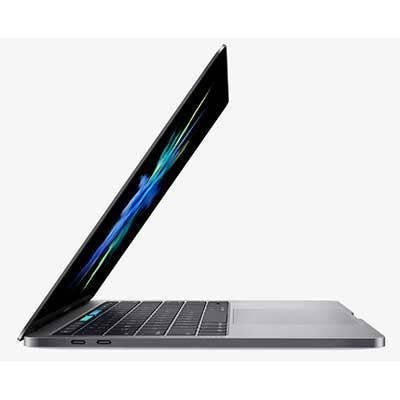
Memory And Storage
On RAM, the MacBook comes with 8 GB as the standard configuration and can be increased to 16 GB. For the XPS 13, the options are for 4 GB, 8 GB or 16 GB of RAM.
In terms of storage, the MacBook starts with 256 GB and can be configured with 512 GB. Storage configurations for the XPS 13 are 128 GB, 256 GB or 1 TB.
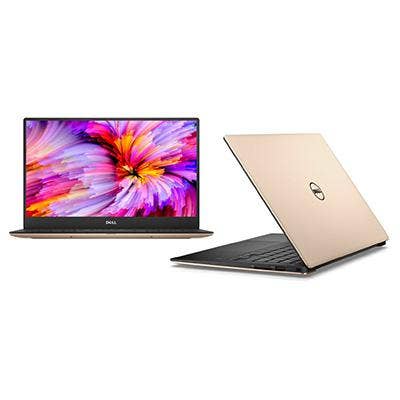
Color
We mentioned the design of the MacBook and XPS 13 as crucial to their appeal. Both are offered in some eye-catching colors. Along with the classic Space Gray and Silver colors for the MacBook, Apple also offers the laptop in Gold and Rose Gold colors. Dell has been following Apple's lead in this respect, by launching its own Rose Gold model for the XPS 13 last year, in addition to the standard Silver model.

Price
Apple's MacBook has fewer configuration options than Dell's XPS 13. That's important to note because, while the starting price of the XPS 13 is a lot lower than the MacBook, the laptops get closer in price when the specs are more closely aligned.
Specifically, the starting price for the XPS 13 is $800, which gets you the non-touch display, 4 GB of RAM, 128 GB of storage and an Intel Core i3 processor. The starting price of the MacBook is $1,299, for a model with more RAM (8 GB) and storage (256 GB). When you outfit the XPS 13 with comparable RAM and storage to the entry-level MacBook, the price goes up to $1,099 (though this also gives you the Core i5 processor). Getting the MacBook with the Core i5 processor brings the price up to $1,399. So essentially, when the spec configurations are as close as possible, you'll be paying $300 more for a MacBook than the XPS 13.